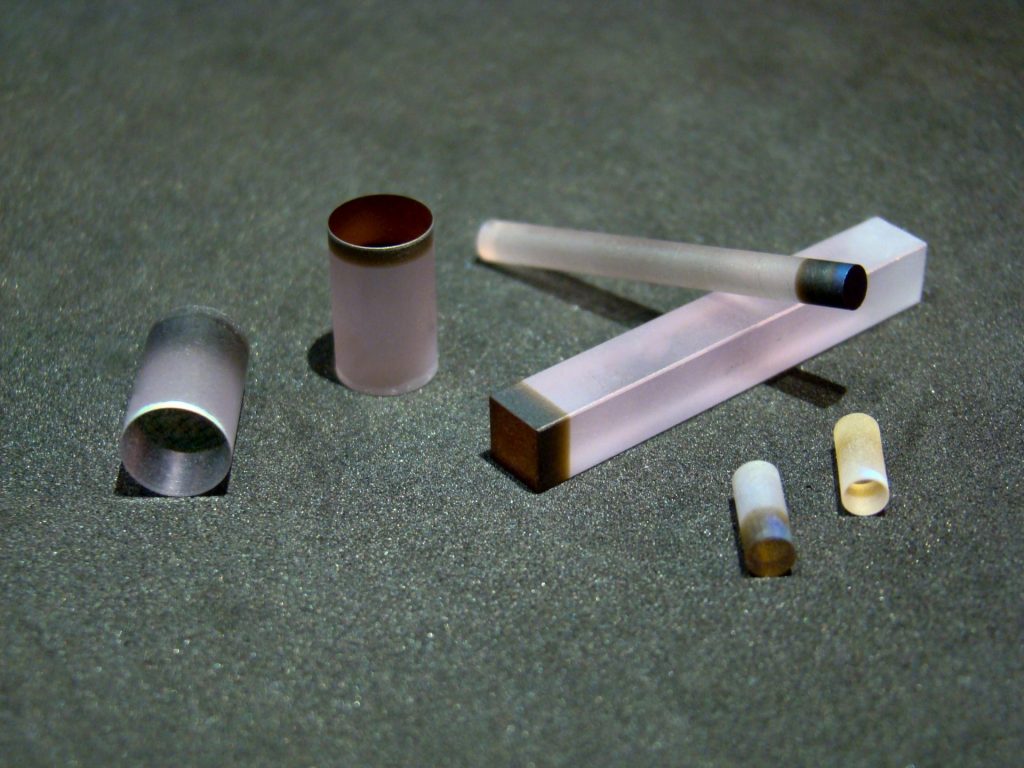Bonded crystals
Bonded crystals (also known as diffusion-bonded crystals) consist of at least two crystals with the same host lattice but different dopants.
During production, the crystals are bonded together by optical contact.
At a high temperature close to the melting point, the crystals are further bonded together under pressure.
Diffusion processes take place during this process.
These bonded crystals are then slowly cooled.
Different combinations lead to different benefits:
If undoped crystals are used as crystal ends, thermal effects can be reduced.
Lower temperature peaks during laser operation reduce the thermal lens effect and thermal breaks.
In disk lasers, ASE (amplified spontaneous emission) can be reduced by using an undoped crystal end.
In addition, such a disk laser is mechanically more stable and exhibits fewer stress fractures.
For end-pumped solid-state lasers, a crystal can be used that consists of segments with different doping levels.
This “smoothes” the absorption curve so that the absorption in the crystal is as uniform as possible.
This in turn leads to a uniform temperature distribution in the crystal, so that a higher output power, higher pump efficiency and better beam quality can be achieved.
In a bonded crystal with different dopants, the crystal with one doping serves as an amplification medium, while the crystal with the other doping serves as a saturable absorber for passive Q-switching.
In this way, the size of a passively Q-switched laser can be effectively reduced at the expense of flexibility.
For example, IMPEX produces the following bonded crystals:
- Nd:YAG + Cr:YAG
- YAG + Nd:YAG + YAG
- Nd:YVO4 + YVO4
- Nd:GdVO4 + GdVO4
You are welcome to browse our stock list or send us your inquiry.


